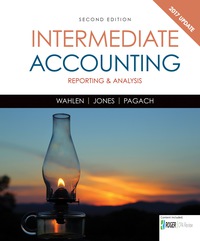Question
Okay so I am struggling with this project. I do not understand how to derive these things from the financial statements of the company symbol
Okay so I am struggling with this project. I do not understand how to derive these things from the financial statements of the company symbol AAP.
Part 2. New Stores
Your next assignment is to determine if AAP should invest in a new stores so you need to determine net cash flows and NPV and determine if the project is viable or not.
Capital expenditures to produce the new stores will initially require an investment of $1.9 billion. Other development costs that will be required to finish the stores project is $800 million this year. Any ongoing costs for upgrades will be covered in the margin calculation below. The store project is expected to have a life of five years. First-year revenues for the new stores are expected to be $4,300,000,000 ($4,300 million). The ride revenues are expected to grow by 37% for the second year, and then increase by 5% for the third, decrease by 15% for the 4th and finally decrease by 25% for the 5th (final) year of operation. Your job is to determine the rest of the cash flows associated with this project. Your boss has indicated that the operating costs and net working capital requirements are similar to the rest of the companys products. Since your boss hasnt been much help, here are some tips to guide your analysis:
- You will need to use the Financial Statements that you downloaded in Part 1.
- You are now ready to determine the free cash flow. Compute the free cashflow based on the information above for each year using :
Free Cash Flow = (Revenues Costs- Depreciation) x (1- Tax Rate) + Depreciation Capex Change in NWC
Set up the timeline and computation of the free cash flow in separate, contiguous columns for each year of the project life. Be sure to make outflows negative and inflows positive.
- Assume that the projects profitability will be similar to AAPs existing projects and estimate costs for each year of your project by using the average ratio of non-depreciation costs to revenue for the last 2 fiscal years (in practice you really tend to use at least 4 years worth of data, but for this exercise 2 years will suffice):
(Costs of Goods Sold* + SG&A)/Sales
*AAP calls cost of goods sold, cost of sales
You should assume that this ratio will hold for this project as well. You do not need to break out the individual components of operating costs in your forecast.
Simply the forecast to the Total Cost of Goods Sold (or cost of revenue) + SG&A +R&D for each year.
Determine AAPs tax rate as 1- (Income After Tax/Income Before Tax) in the last fiscal year reported. Recalculate the WACC form Part 1 using this tax rate. What should you use if this number is negative?
Calculate the net working capital required each year by assuming that the level of NWC will be a constant percentage of the projects sales. Use AAPs last 2 fiscal year average NWC/Sales to estimate the required percentage. (Use only accounts receivable, accounts payable, and inventory to measure working capital. Other components of current assets and liabilities are harder to interpret and are not necessarily reflective of the projects required NWCe.g., AAPs cash holdings.)
To determine the free cash flow, calculate the additional capital investment and the change in net working capital each year.
Determine the NPV of the project with WACC calculated in Part 1 step 10 and the projects IRR
For the NPV calculation remember to add the first CF when you are using the excel function =NPV(rate, CF1:CF5) + CF0
For the IRR include all cash flows in your excel calculation.
Should AAP invest in the project?

Step by Step Solution
There are 3 Steps involved in it
Step: 1

Get Instant Access to Expert-Tailored Solutions
See step-by-step solutions with expert insights and AI powered tools for academic success
Step: 2

Step: 3

Ace Your Homework with AI
Get the answers you need in no time with our AI-driven, step-by-step assistance
Get Started


